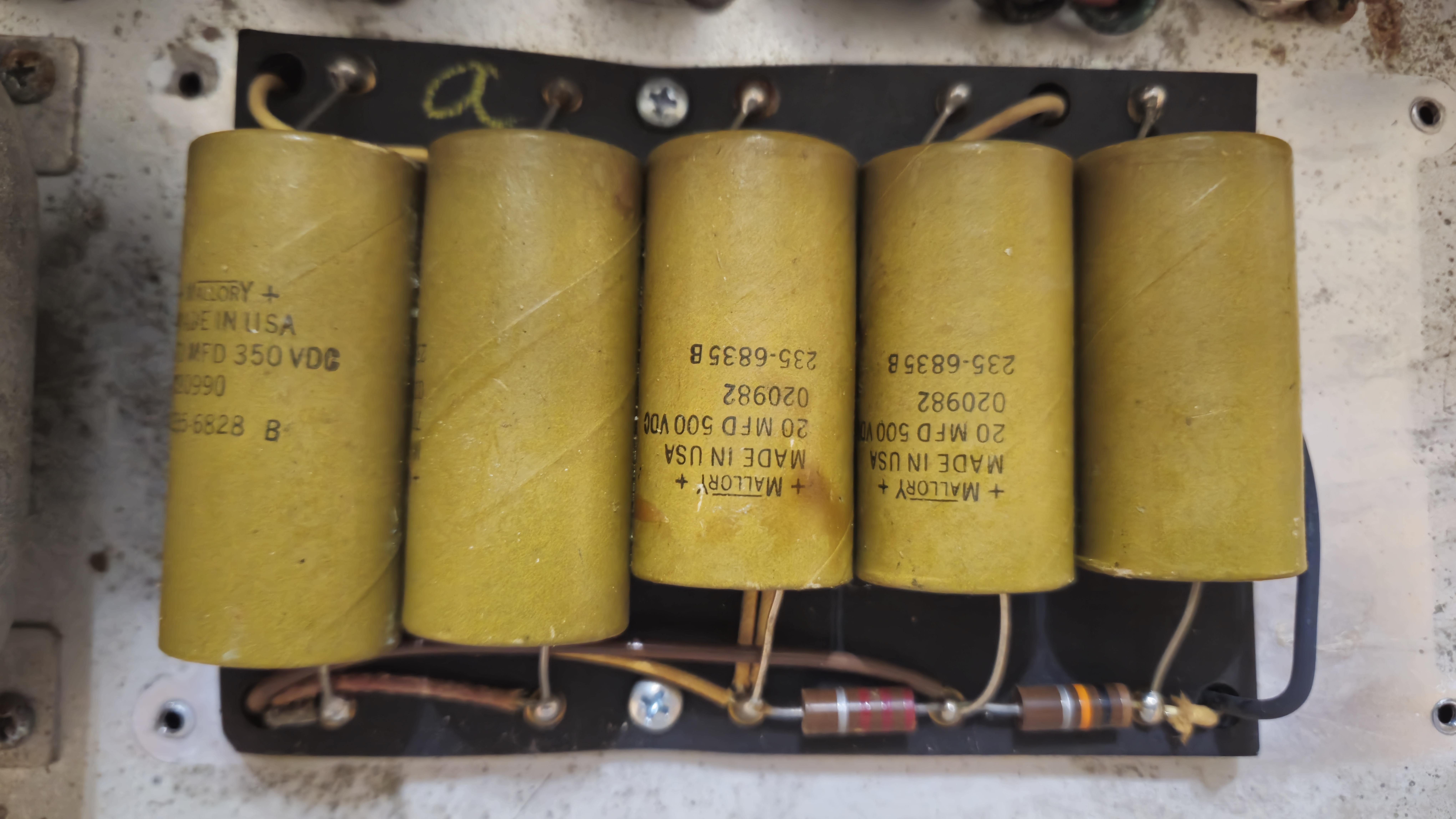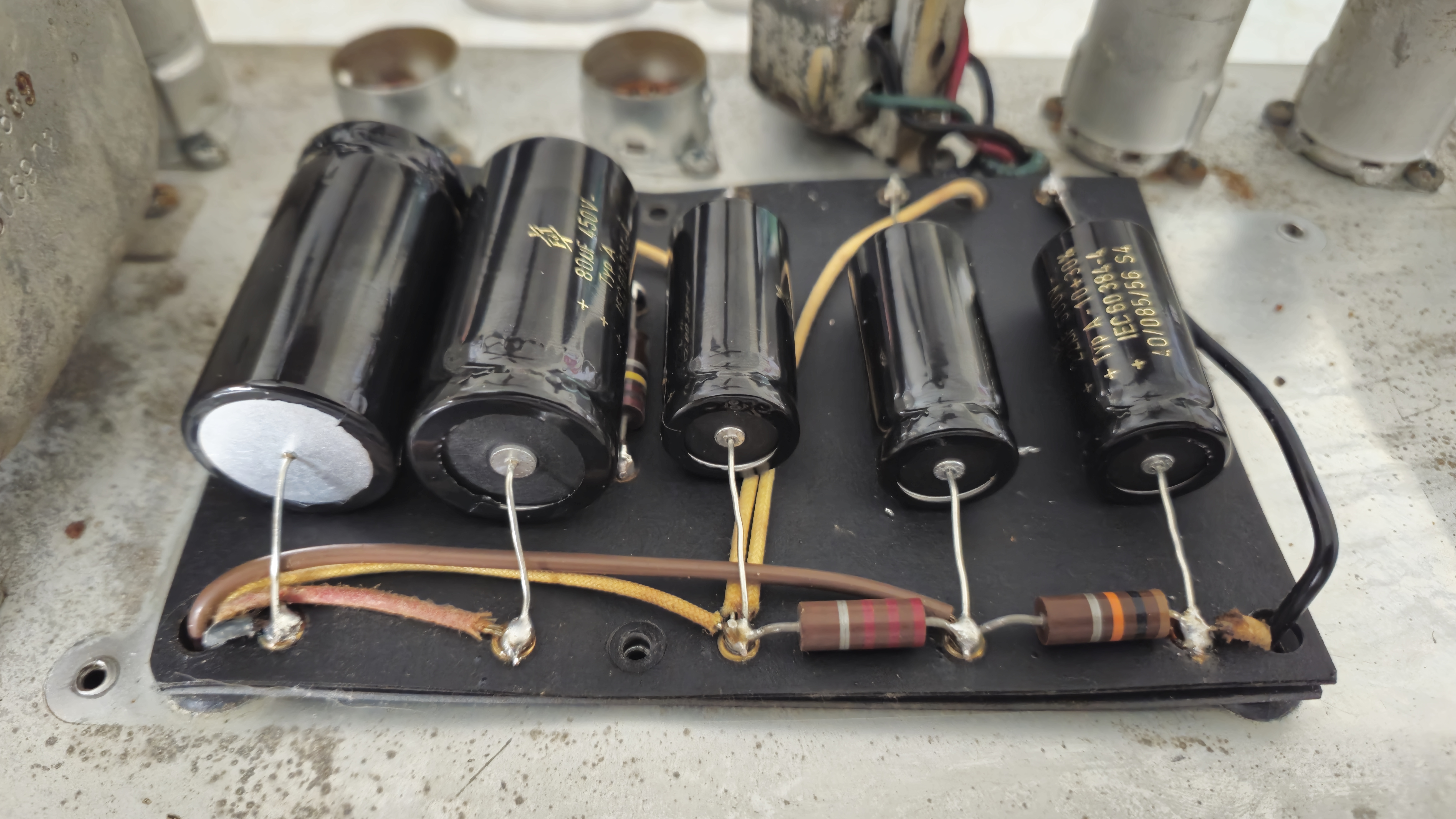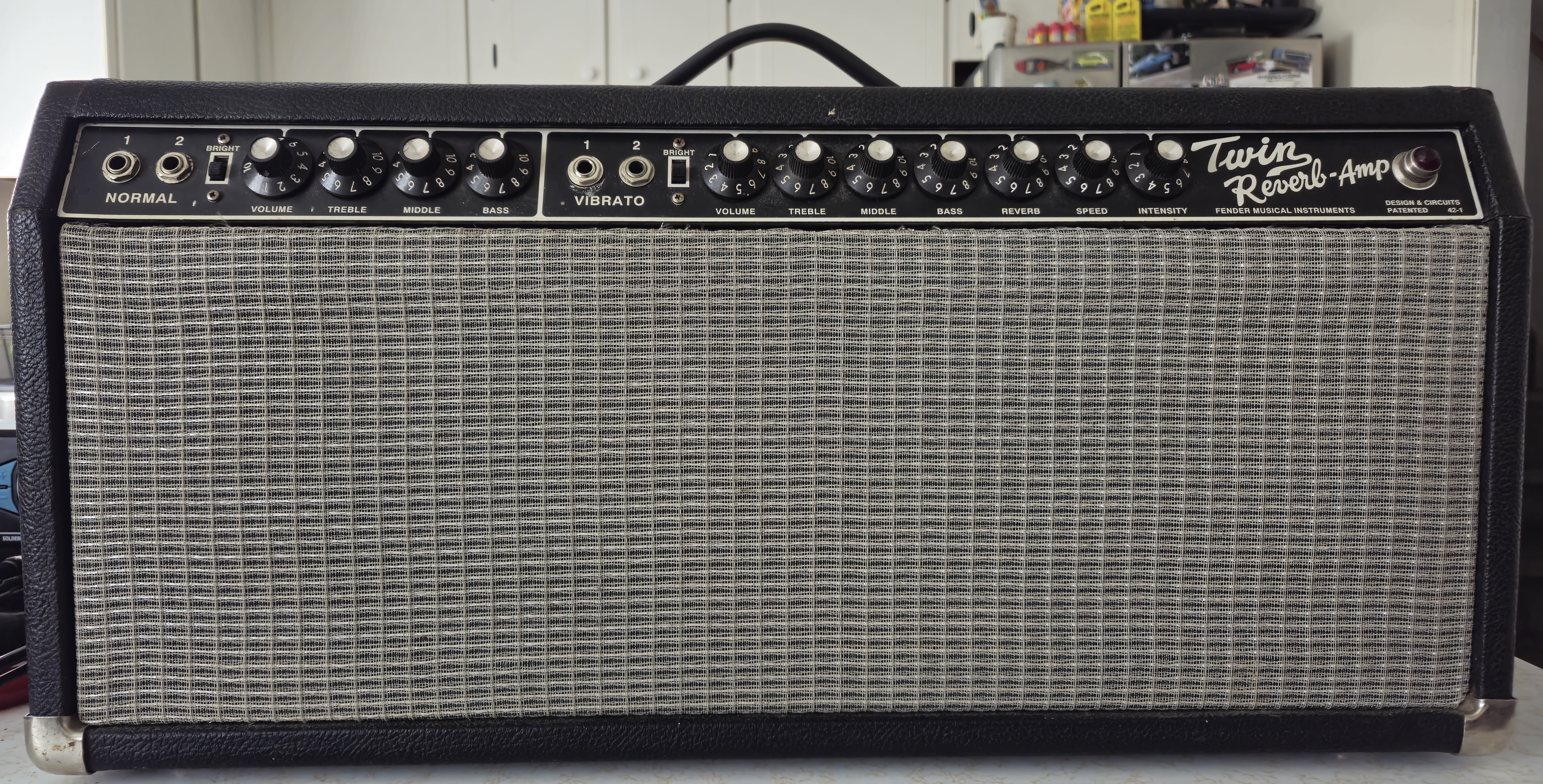It’s like seeing a 340 Duster, but it actually has a Hemi in it.solderhead wrote: ↑Tue Feb 25, 2025 4:41 pm
HEY! You gotta remove that JBL tag and replace it with an EV tag!
Bringing life back to a 1969 AB763 Twin Reverb Amp
Moderators: pompeiisneaks, Colossal
-
BrownIsound
- Posts: 66
- Joined: Sat Apr 23, 2022 9:39 pm
Re: Bringing life back to a 1969 AB763 Twin Reverb Amp
Re: Bringing life back to a 1969 AB763 Twin Reverb Amp
I do NOT have an easy or simple method to check for cap leakage - as far as I know, I have to remove the doghouse, discharge the caps, disconnect a cap lead and test the cap for leakage. I'm sure there's a simpler way I'm unaware of. Your knowledge here would be GREATLY appreciated, again, sir.
Thank you, again, Smitty.
- sssmoka
Re: Bringing life back to a 1969 AB763 Twin Reverb Amp
That's the way I do it. I use a 1K resistor on the negative lead and convert volts to milliamps. You could probably live with a mA of leakage if you were desperate for vintage mojo.
If you've got the preamp tubes out you can measure the leakage of the last two caps across the dropping resistors. I suppose you could do the same across the choke. Math is your friend.
From a business perspective it makes a lot of sense to replace the caps. But if we were real businessmen (or women) we wouldn't be hanging out here, would we. We'd rather bask in the glory of not having sent marginally healthy vintage caps to their grave, believing that the tone gods look favorably on that kind of chivalry. There must be some number of these caps we must save before we are presented with a $100 Blackface Princeton Reverb at an estate sale.
May the (electromotive) force be with you.
If you've got the preamp tubes out you can measure the leakage of the last two caps across the dropping resistors. I suppose you could do the same across the choke. Math is your friend.
From a business perspective it makes a lot of sense to replace the caps. But if we were real businessmen (or women) we wouldn't be hanging out here, would we. We'd rather bask in the glory of not having sent marginally healthy vintage caps to their grave, believing that the tone gods look favorably on that kind of chivalry. There must be some number of these caps we must save before we are presented with a $100 Blackface Princeton Reverb at an estate sale.
May the (electromotive) force be with you.
AC568 Definitely Needs New AC Filter Caps
Opened the doghouse this morning. It's time for caps...

At least one is leaking electrolyte! As such, I'm rather sure it, and possibly others, are leaking current, as well...

I'll report back once I get those nice, new F&Ts in there.
- sssmoka

At least one is leaking electrolyte! As such, I'm rather sure it, and possibly others, are leaking current, as well...

I'll report back once I get those nice, new F&Ts in there.
- sssmoka
New F&T AC Filter Caps Installed
F&T AC Filter capacitors installed.


- sssmoka


- sssmoka
Re: Bringing life back to a 1969 AB763 Twin Reverb Amp
Referencing schematics, the AB763 has a 25uf/25v Vibrato cathode bypass cap while the AC568 has a 5uf/25v Vibrato cathode bypass cap. What's on my bench has a 25uf/25v white plastic Mallory that matches the rest of the cathode bypass caps. Going to replace them all, just want to get the value right. Just wondering, is this indeed an AC568 wired with parts that were around? A "hybrid" in-between wiring job? Curiosity did kill the cat...
- sssmoka
- sssmoka
Re: Bringing life back to a 1969 AB763 Twin Reverb Amp
Your work looks good.
As best I can tell Fender switched from 25uF to 5uF after the ac568 but before the AA270. Either value will work (or anything in between for that matter). I don't think a 25uF is wrong. I think that Fender probably decided that with a 100K cathode resistor a 5uF capacitor would fully bypass AC down to a very low frequency. Dealer's choice. Whatever you have on the bench will work.
As best I can tell Fender switched from 25uF to 5uF after the ac568 but before the AA270. Either value will work (or anything in between for that matter). I don't think a 25uF is wrong. I think that Fender probably decided that with a 100K cathode resistor a 5uF capacitor would fully bypass AC down to a very low frequency. Dealer's choice. Whatever you have on the bench will work.
Re: Bringing life back to a 1969 AB763 Twin Reverb Amp
The 5uf cathode bypass cap on V5B allows for quicker reaction of changing the speed of the trem effect, whereas the 25uf causes the change of the speed to react slower as you turn it.
Re: Bringing life back to a 1969 AB763 Twin Reverb Amp
Thank you, Smitty. I appreciate you, sir.Smitty wrote: ↑Wed Feb 26, 2025 7:43 pm Your work looks good.
As best I can tell Fender switched from 25uF to 5uF after the ac568 but before the AA270. Either value will work (or anything in between for that matter). I don't think a 25uF is wrong. I think that Fender probably decided that with a 100K cathode resistor a 5uF capacitor would fully bypass AC down to a very low frequency. Dealer's choice. Whatever you have on the bench will work.
- sssmoka
Re: Bringing life back to a 1969 AB763 Twin Reverb Amp
'69 Fender Twin Reverb Amp head repair job completed. 



Thank you, all, for your admonition and assistance.
- sssmoka



Thank you, all, for your admonition and assistance.
- sssmoka
Re: Bringing life back to a 1969 AB763 Twin Reverb Amp
Looks great. Nice work. Where did you end up with idle current?
Re: Bringing life back to a 1969 AB763 Twin Reverb Amp
Thank you, Smitty. I appreciate the acknowledgement.
As for idle current, I did NOT re-bias this amp. Ill-advised move? Yes, indeed. Why didn't I? Allow me to explain... TL; DR.
The amp's "liaison" - the gentleman that brought the amp in - explained that he did so for the widow of a late friend. Said widow is having to liquidate her late husband's gear due to financial constraint. As such, this amp is going up for sale, which precipitated the requisite amp service I performed - they know you get more for a working amp than you do when it's sold for parts.
Having to watch every cent, money is an issue - as such, the owner/liaison made the choice to forego the new set of vacuum tubes (which accounted for a large part of their bill - my markup on tubes is null - it was the fact that this amp requires a full set of 10 tubes that exacerbated the cost).
So, no new tubes. The years old set of Sovtek tubes wasn't properly working due to poor connections in the power amp tube sockets - which I ended up replacing. With the old Sovtek tubes back in and working as expected - although they're 5881s rather than 6L6s - I perceived two reasons to skip the re-bias procedure for this amp:
- The fact that I'm not sending her home loaded with JJ 6L6s
- The unknown variable of brand/model tube the amp's new owner is going to put in there
The amp is scheduled for pickup sometime today. It's assembled and ready to go, but it is still in my possession. Did I make a mistake in not re-biasing? Should I go back in and do so? Thoughts?
Thank you for your time.
- sssmoka
Re: Bringing life back to a 1969 AB763 Twin Reverb Amp
I agree with your reasoning.
When I service old Fender amps, I typically clean and re-tension the output tube sockets. I use a couple of old jewelers screwdrivers to bend things back into shape. I then apply Caig D5 with a small round dental cleaning brush. I let that sit for a while and then flush it out with parts cleaner. I flush both sides of the socket to prevent arcing.
When I service old Fender amps, I typically clean and re-tension the output tube sockets. I use a couple of old jewelers screwdrivers to bend things back into shape. I then apply Caig D5 with a small round dental cleaning brush. I let that sit for a while and then flush it out with parts cleaner. I flush both sides of the socket to prevent arcing.
Re: Bringing life back to a 1969 AB763 Twin Reverb Amp
D'oh! I sent the Twin Reverb Amp head home with its owner, only to discover the Reverb control acting like a Master Volume control. My first thought is Reverb Tank - but I have no idea. Does anybody have any knowledge as to what's causing this? Reverb driver? Reverb recovery? How do I fix it? Thanks all. I appreciate the assistance.
- sssmoka
- sssmoka
Re: Bringing life back to a 1969 AB763 Twin Reverb Amp
Have you validated this condition or is this what the owner is reporting? Your last pic of the chassis does not show that the reverb mixer has been modified. I can't see the pot, but if it is connected according to the schematic it would be very difficult for it to act as a master volume--even if it failed.